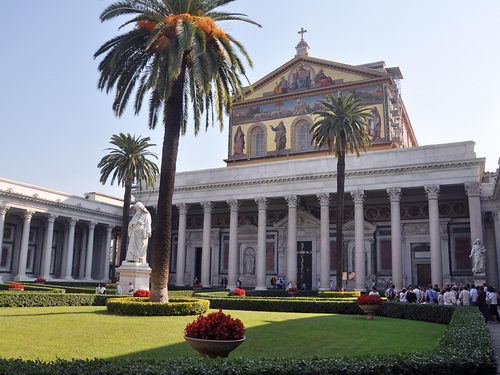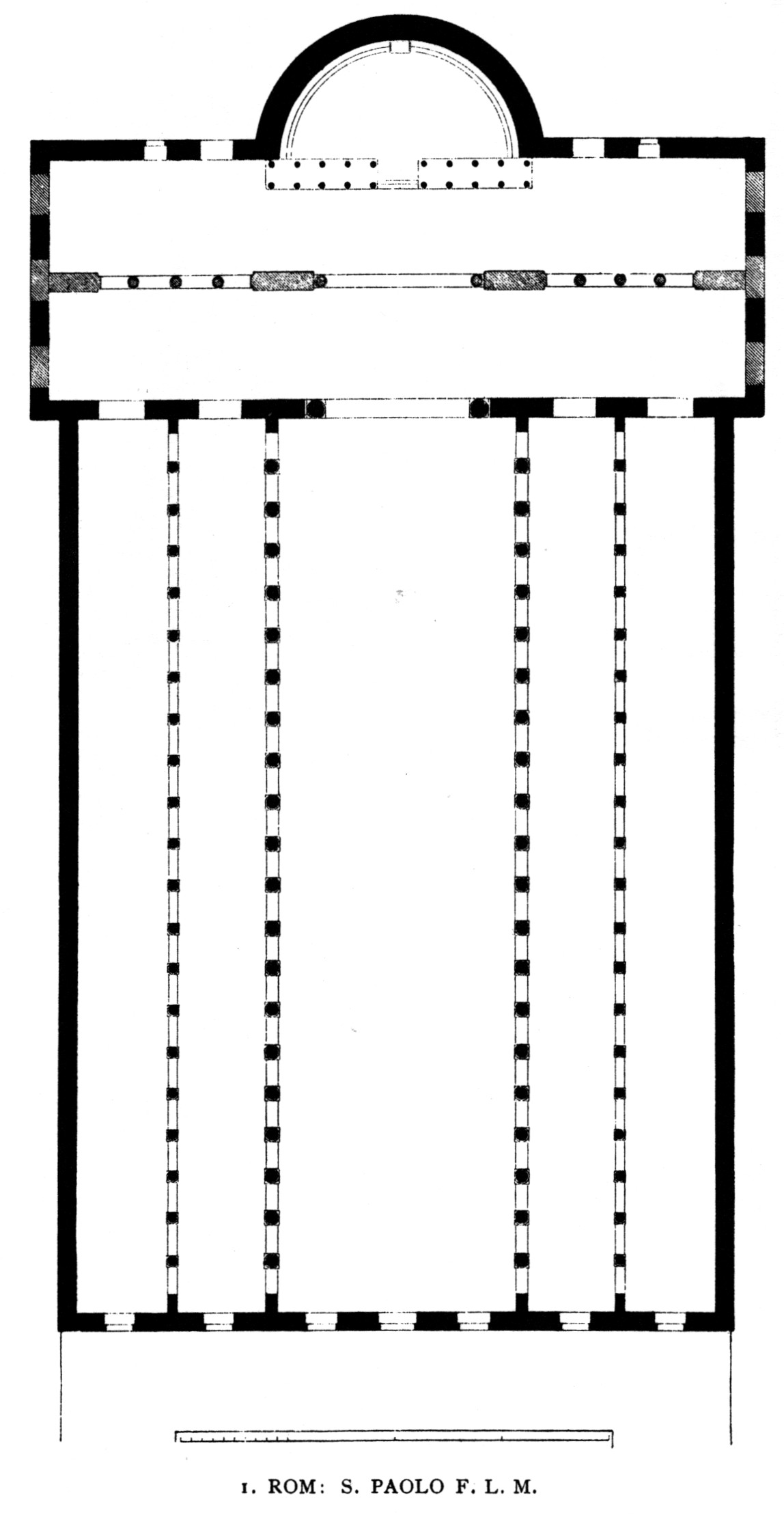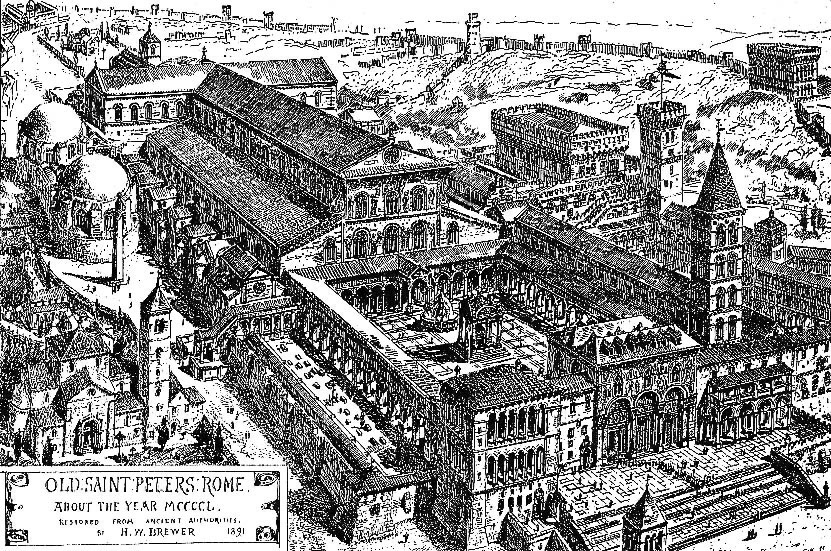 |
| The Papal Basilica of St. Paul outside the Walls (photo from Ferrell's Travel Blog) |
 |
| Layout of St. Paul's (from wikipedia) |
The ancient Roman Christians venerated this site as the place of St. Paul's beheading and burial. As a Roman citizen the great apostle to the gentiles was spared the agony of crucifixion. His head now rests in the Roman Cathedral, but his body still resides in a tomb beneath the main altar of the basilica.
St. Paul outside the Wall remains the only Papal basilica I have not visited, so I will refrain from commenting any further.
On the other hand, I spent two days in st. Peter's and have quite a bit to say, but people tend to like pictures as much as words, so I will make this into a visual post very shortly.
The original St. Peter's basilica was begun by Emperor Constantine over a shrine on Vatican Hill here Christians had venerated what tradition tells us was the place of St. Peter's burial since the first century—St. Peter's bones were not actually discovered until the reign of Pius XII. The basilica was completed in 360, but constantly remodeled. Originally the tomb of the first Pope of Rome was in the apse of the basilica, behind the altar. Tidal flow of pilgrims necessitated switching these two. A more elaborate throne for the Pop was constructed, as consecration of the Bishop of Rome became more usual at St. Peter's at the cost of the Lateran Cathedral, papal tombs, and a series of ninth century invasions by Saracens. One such remodel, around the time of Leo IV, led to an altar embroidered in precious stones, ambos and doors of silver, and mosaics taken from the finest Eastern churches. Like most Roman basilicas, there was a group of canons attached to the church and a cloister preceding the entrance.
 |
| St. Peter's basilica around the year 1450 (taken from wikipedia) |
 |
| A cross-section of the old basilica (from saintpetersbasilica.org) |
 |
| Inside the old St. Peter's notice the elevated altar surrounded by the twisting arches. St. Peter's tomb was below. Above is the fatal ceiling. (image taken from jamesbrantley.net) |
 |
| Another long view inside the old basilica |
 |
| From New Liturgical Movement |
Below is a video from the same source showing a detailed view of the old basilica. I always found the old pine cone funny. It is a pagan bronze work dating to the first century and which resided in the Vatican square for no reason other than its pre-dating the basilica.

No comments:
Post a Comment